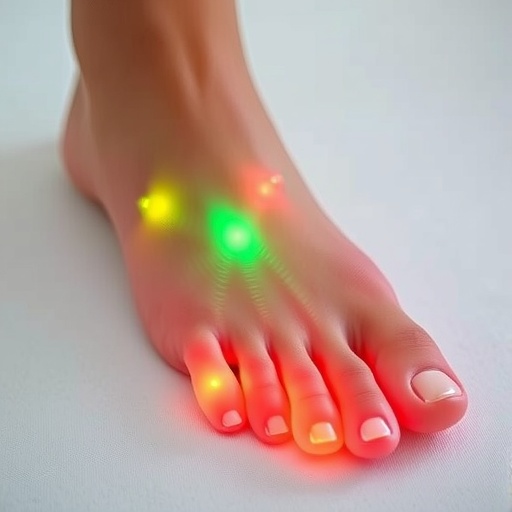Neonatal hypoglycemia, a condition characterized by abnormally low blood sugar levels in newborns, represents one of the most common metabolic disorders encountered in the neonatal period. Despite its prevalence, the condition is critically important because if untreated, it can lead to severe and irreversible neurological damage. Traditionally, standard treatment has involved the administration of intravenous dextrose, which, although effective in quickly restoring blood glucose levels, is invasive and involves considerable discomfort and resource utilization. Recent advances, however, have highlighted the potential of a less intrusive approach: oral dextrose gel.
Oral dextrose gel, typically administered at a concentration of 40% and dosed at 0.5 ml per kilogram of the neonate’s body weight, has emerged as a promising non-invasive alternative. The appeal of this method lies not only in its ease of use and minimal invasiveness but also in its potential to reduce the need for intensive care unit admission, thereby lowering hospital costs and stress for both infants and their families. Despite these theoretical advantages, definitive clinical evidence for widespread adoption has been pending.
In a groundbreaking 2025 systematic review and meta-analysis, Sivakumar et al. compiled data from five randomized controlled trials encompassing a total cohort of 2,742 neonates diagnosed with hypoglycemia, defined here as a blood glucose level below 2.6 mmol/L. These neonates were divided into two groups: 1,326 infants received the oral 40% dextrose gel, and 1,416 infants were administered placebo treatments. This large sample size allows for a robust analysis, enhancing the statistical power and reliability of the findings.
.adsslot_OPJwiZIGTd{width:728px !important;height:90px !important;}
@media(max-width:1199px){ .adsslot_OPJwiZIGTd{width:468px !important;height:60px !important;}
}
@media(max-width:767px){ .adsslot_OPJwiZIGTd{width:320px !important;height:50px !important;}
}
ADVERTISEMENT
The primary outcome measure evaluated in these studies was the rate of admission to the neonatal intensive care unit (NICU), a critical marker representing the severity of hypoglycemia and the need for escalated medical interventions. Intriguingly, the initial pooled analysis across the five trials displayed a non-significant trend toward reduced NICU admissions in the dextrose gel group compared to placebo, with a risk ratio of 0.68. However, the confidence interval was wide (0.33 to 1.38), and the p-value stood at 0.28, suggesting that this reduction could have occurred by chance.
Understanding the heterogeneity among the included studies is essential when interpreting these findings. The variability indicated by an I² statistic was high, denoting considerable inconsistency across the trial results. Upon conducting a sensitivity analysis—essentially repeating the meta-analysis but excluding one outlier study that contributed disproportionately to heterogeneity—the results shifted notably. This refined analysis yielded a risk ratio of 0.52, with a more narrow confidence interval (0.31 to 0.90) and a statistically significant p-value of 0.02. Moreover, heterogeneity between studies was substantially diminished, with I² dropping to 19%, indicating that the smaller, more consistent body of evidence still strongly favors oral dextrose gel.
The implications of these findings are profound. Oral dextrose gel provides a non-invasive, easy-to-administer treatment option that not only addresses the immediate biochemical derangements of neonatal hypoglycemia but might also prevent the cascade of complications that necessitate admission to the NICU. Reducing NICU admissions is of paramount importance, considering the emotional, financial, and clinical burdens associated with neonatal intensive care.
This meta-analysis further carries significant weight because it employs the GRADE (Grading of Recommendations Assessment, Development and Evaluation) framework to assess the quality of evidence across trials. GRADE helps in evaluating the certainty of findings, which guides clinicians and policymakers in making informed decisions about implementing novel therapies. While the collective evidence supports the effectiveness of oral dextrose gel, the authors cautiously recommend further large-scale, high-quality randomized controlled trials to confirm these preliminary yet promising results.
Beyond the clinical advantages, the broader healthcare system may benefit from a shift towards oral dextrose gel treatment protocols. NICU facilities often face capacity challenges, and reducing avoidable admissions can optimize resource allocation and reduce healthcare costs without compromising infant care quality. In lower-resource settings, where NICU access may be limited or non-existent, effective non-invasive interventions could also directly impact neonatal morbidity and mortality rates.
Despite these encouraging outcomes, certain limitations and considerations remain. The exact timing and number of doses, as well as the gestational age and baseline risk profiles of neonates, vary between trials. Also, because one study exerted disproportionate influence on overall heterogeneity, more investigation is needed to understand the contextual factors behind differing results. Neonatal hypoglycemia can be multifactorial, and integrating oral dextrose gel into broader clinical management guidelines requires nuanced consideration.
Moreover, the neurodevelopmental outcomes of infants treated with oral dextrose gel compared to traditional intravenous therapy remain an important area for further longitudinal study. While early correction of hypoglycemia is critical, ensuring that such treatments translate into improved long-term cognitive and motor development will solidify the clinical value of this approach.
The findings of Sivakumar and colleagues encapsulate a promising shift in neonatal care, emphasizing less invasive, patient-centric treatment modalities grounded in rigorous evidence synthesis. As neonatal medicine steadily progresses towards minimizing hospital stays and procedural burdens, oral dextrose gel may well become a mainstay in managing at-risk infants, contingent upon further validation by future trials.
Subject of Research: Effectiveness of oral dextrose gel in treating neonatal hypoglycemia to reduce NICU admissions.
Article Title: Effectiveness of oral dextrose gel for neonates at risk of hypoglycemia: A systematic review, meta-analysis, and GRADE assessment of randomized controlled trials.
Article References:
Sivakumar, G., Kuppusamy, P., P, L.P. et al. Effectiveness of oral dextrose gel for neonates at risk of hypoglycemia: A systematic review, meta-analysis, and GRADE assessment of randomized controlled trials. J Perinatol (2025). https://doi.org/10.1038/s41372-025-02387-x
Image Credits: AI Generated
DOI: https://doi.org/10.1038/s41372-025-02387-x
Tags: blood sugar levels in newbornsclinical evidence for oral glucose therapycost-effective neonatal treatmentshypoglycemia in infantsimproving infant health outcomesintravenous dextrose alternativesneonatal hypoglycemia treatmentneonatal metabolic disordersnon-invasive hypoglycemia managementoral dextrose gel benefitsreducing ICU admissions for neonatessystematic review on neonatal care





